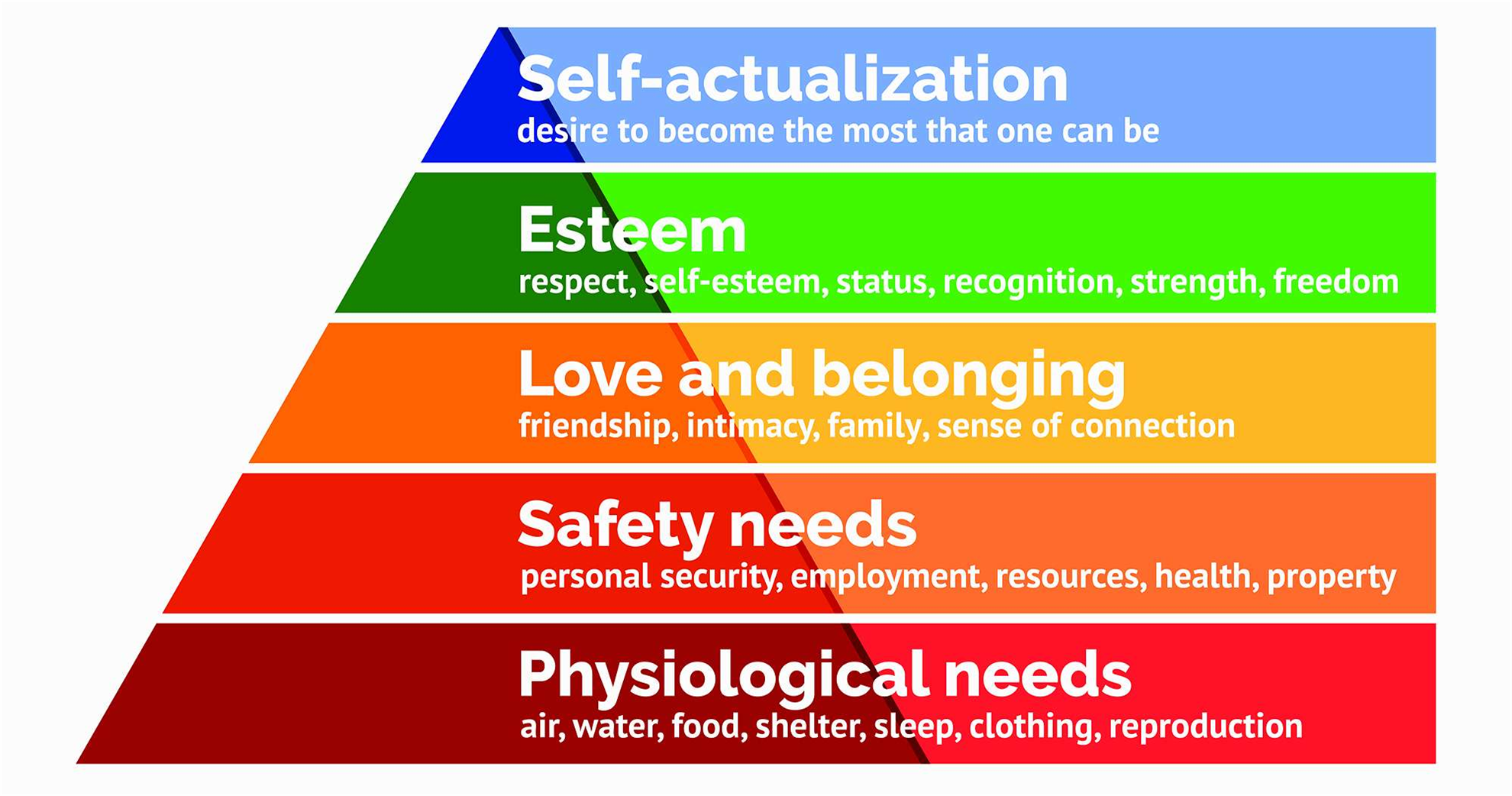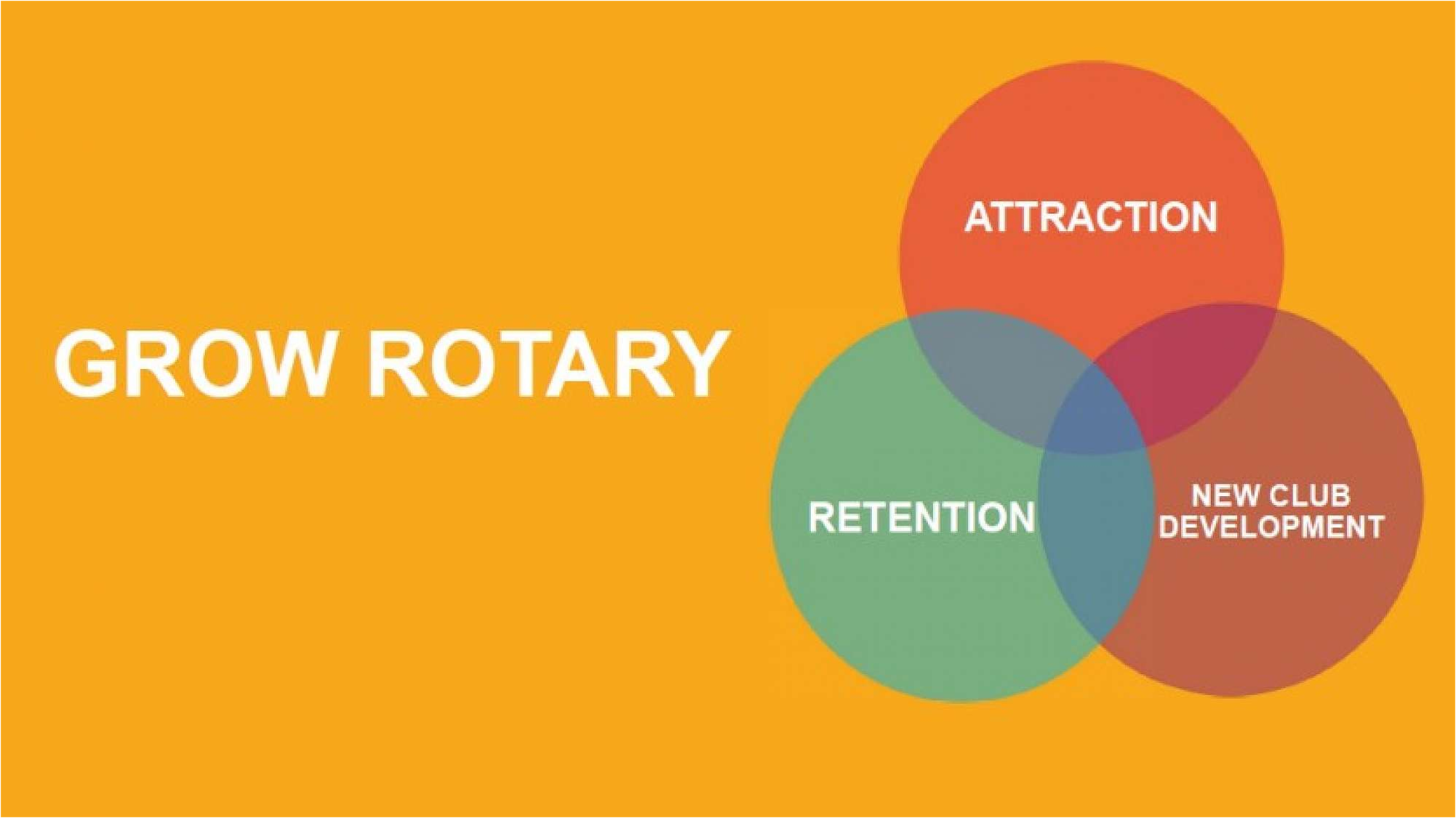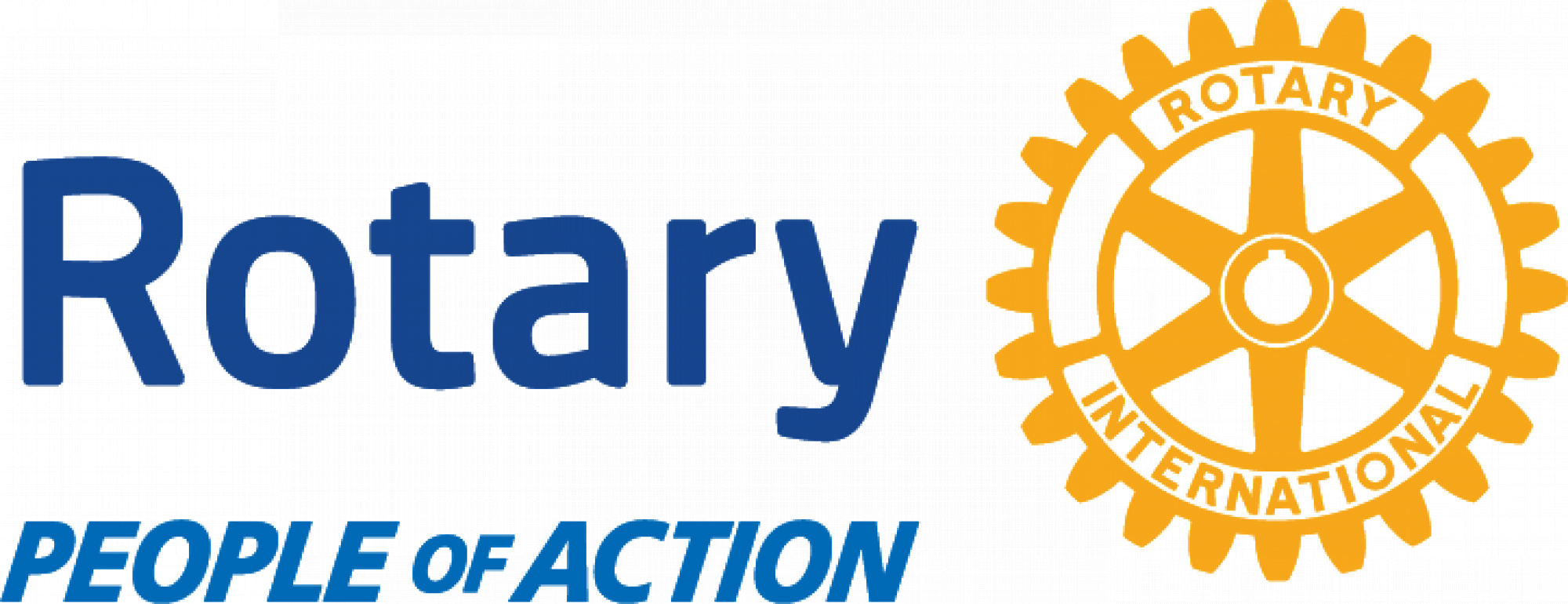
When considering ‘Membership Attraction Strategies’ and ‘Opportunities in Rotary’, a new approach may include Maslow’s Theory, as well as, motivational speaker Tony Robbins' ‘Six Human Needs’.
Additionally, while in reviewing Mark Huddleston’s ‘Creatures of Habits’, he mentioned the connection of Maslow’s Theory with reference to meeting needs and the physiological needs being reflected in Rotary’s ‘Seven Areas of Focus’.

Maslow’s Hierarchy of needs, initially implied that our most basic needs must be fulfilled before we can move on to the higher needs, but these needs can overlap, and move back and forth, with flexibility, based on circumstances and individuals. Once our basic needs of physiological and safety are satisfied (needs that may well be barriers to younger people joining) we move on to psychological needs – our need for relationships and friends – a feeling of belongingness for interpersonal relationships, affiliating, connectedness, and being part of a group. This is in turn can be correlated to how Rotary started.
The fourth level - Esteem needs - includes, self-worth, accomplishment and respect, while self-actualization needs are the highest level in the hierarchy, and refer to the realization of a person's potential, self-fulfillment, seeking personal growth and peak experiences. This is the desire to accomplish everything that one can, to become the most that one can be.
But, how does this can apply to your members and your Club?

In line with this is motivational speaker Tony Robbins, when he first introduced his ‘Six Human Needs’ at a memorable TED Talk.
1. Certainty – the need for comfort, stability, and protection for survival.
2. Uncertainty or Variety – keeps us from being bored. Our risk takers and adventure junkies thrive on this.
3. Significance – people want to feel significant…. important, special, and unique, but most importantly appreciated.
4. Connection and Love – a need to feel togetherness, passion, unity, warmth, desire, and love in our lives.
Robbins refers to these first four needs as personality needs. We find ways to meet these by working harder or creating stories to make sense of them. The next two needs are one of the spirit, that aren’t achieve by many people – I believe, nearly every member of Rotary has, does, or can experience these in their service.
5. Growth – We need to feel like we are developing, strengthening, learning, expanding, and cultivating ourselves.
6. Contribution – humans like to give, donate, leave our mark, serve, offer, and contribute to others.
We all seek to meet the six human needs, but for everyone two will stand out – it will be different for everyone, and can change with time, and circumstances….. Just like Maslow’s.
Frank Devlyn (Rotary International President 2000-01) is a prominent businessman, who has written three books on Rotary, and others on Leadership and Public Speaking.
His first book ‘Frank Talk’, was written and published in one month – all with Rotarian help.
He highlighted people’s most common concerns about joining Rotary:
- They don’t know what it is
- They want to know WIIFM (What’s In It For Me)
- It is a group of boring old men
- I am too busy
- It costs too much
We can answer WIIFM through concepts in relation to Maslow’s Theory and Tony Robbin’s ‘Six Human Needs’. The challenge is ‘What difference can you make in addressing people’s concerns?’

The three ways that Rotary can grow are:
1. Retaining our current members - That alone is a challenge!
2. Attracting new members
Clubs need to ensure that they are a club - that people want to join
- What is the aura of your Club?
- What is your image? - In the community - On social media - In your meetings?
3. The third way is probably the most exciting sales option we have – the flexibility opportunities to revitalize your club,
- COVID has realised a new way to meet
- Members have responded and changed – we have elderly members using and enjoying Zoom at Club and District level!
- New style clubs are evolving – we are seeing GREAT interest in Hybrid Clubs
Some years back, Rotary International engaged a company Siegel & Gale, to conduct a world-wide survey on membership. Significantly, the survey identified the top two reasons people join Rotary:
- To positively impact their community – through service.
- And for the friendships and connections to make membership an enjoyable opportunity.
Clubs should not be disillusioned believing that members enjoy spending good money, and more importantly, valued time, on fairly ordinary meals, fines, and a speaker selling their cause.
Attracting and retaining members has a direct connection to the public image and activities of clubs. Rotary’s public image is shaped by the actions of each of its members, as well as by its involvement in the community, its presence on the web and social media, and the publications it produces.
The public image will have a major impact on whether your members feel proud to be part of your club, whether your club appears attractive to new members, able to fulfill a potential members need for what Maslow identified as ‘Esteem and Self-actualization’ or what Robbins identified as ‘Growth and Contribution’.
We need to be and appear to be a professional team. To show we are professional and a true, coordinated organization – we really need to portray consistent and professional branding, from your social media to your clothing.
No other organization is quite like Rotary. By using our unique voice consistently in all our messaging, we can ensure that our communications reflect our distinct character.
If we speak, write, and design in one voice, our communications will sound, read, and look unmistakably like Rotary. This will give our audiences a better understanding of who we are. Together, we can show the world that we ARE People of Action.

But remember...Rotary Public Image is more than a logo, its much bigger than say an unrecognizable road sign when driving at 60km/h or an unneeded one on the outskirts of a town in the middle of nowhere and with no foot traffic.
People have other ways to find out when and where club meetings are on these days other than big and expensive signs. In fact, if you think about it, how many clubs have had a potential new member knock on the door and walk in from seeing a "club meets here" sign in the past 5 years...or even the past 20 years? Most club signs are nothing more than an image that Rotarians know – without the mark of excellence (the wheel) with the word Rotary – the majority of persons do not know what it is.
So when talking about Rotary and membership, the discussion is not about what we know, it is in fact about a brand that reflects our identity, our vision, and our essence, as well as, our values as an organization – people perceive Rotary from their experiences, contact, stories and images we share. Clubs and members can do it better in promoting our image, through compelling, consistent brand communication that engages and attracts more members, more donors, and more partners.
Both Maslow and Robbins indicated that people have a psychological need to be loved and belong. Thus, any service-based club or organization will not grow, if it does not accept, befriend and work around its members.
This simple attraction strategy should lead to a true leader exploring, discovering and recognizing what club members' skills, interests and passions are, and giving members the opportunity to grow them within the club. To know and value your current and prospective members is the most importantly attraction and retention strategy a club and its leaders can develop.
The case may be that not every member may be interested in or agreeable to your club's current timing, style or activities. So club leaders can step up as true Rotarians and act selflessly, by encouraging prospects to look around and find a club that better suits their needs and preferences, rather than lose someone entirely from the Rotary family – in most cases, such persons will appreciate your honesty and caring. In such cases, it is more about the strength of Rotary as a whole and not just one club, one style or one option.
This in turn redirects and re-emphasizes the importance of the Membership Chair role for a club and a district.
Whether via online membership leads or potential members who approach a specific club or demonstrate a general interest in Rotary or service on the whole, developing, maintaining and implementing an effective attraction strategy is key for any membership chair and committee. Concurrently, a membership chair should also be focused on retention strategies for current members – whether such involves how to keep a member in his/her current club or just how to keep them in the Rotary family.
Additionally, whether when attracting or retaining member interest in Rotary, it is now more important than ever to demonstrate the numerous and diverse opportunities and offerings of the organization – so don’t forget to emphasize
- The variety of standard and bespoke positions and committees available in a club for a member to be part of and serve on year to year
- The various club, District, International projects with which member can get involved
- The many International Fellowships Groups that Rotary offers – from stamp collecting to beer drinking and flying (but not at the same time)
- The array of Rotary Action Groups that are specifically aligned to Rotary's Seven Areas of Focus and made up of experts
- The chances to travel, network and learn through Rotary's Friendship Exchange program
- The opportunities for personal and professional development provided by Rotary's Learning Centre and Scholarships program or through local mentorship and vocational offerings
Lastly...with its changing governance, Rotary and its clubs are now very flexible organizations.
Costs and time are cited as the major reason members leave a club – but it is important to remember that these are areas under a club’s autonomous influence, not Rotary International’s.
Here are some simple guidelines for clubs to mitigate against these types of member issues:
- Keep costs and time demands on members down
- while club membership dues should always be monitored and tempered, meals, fines, raffles are sometimes the true financial burden to members
- Be friendly and current in your conduct
- meet in attractive visible venues
- engage and respect club, district and RI knowledge, experience and leadership
- Engage (newer) members with a mentor
- take an interest in the individual
- offer learning and training opportunities
- participate together in club socials and services
When it comes to adapting to member needs, it is up to your club to decide specifically if, and how, you want to introduce flexibility options into your club meetings. Decide what changes would benefit your club, edit your club bylaws to reflect them, and try them out. If you decide they aren't working, try something else.
So in conclusion...how Rotary meets our club and member needs is quite a story in itself - one filled with many doors and corridors which evolved through lessons learnt and the changing needs within society. But, as we all know, after over a century since its inception, Rotary remains a significant and valuable fixture across the world and in our communities and it is the job of us all as member of the Rotary family to continue the effort not only to sustain Rotary, but to also facilitate and promote its growth and development over the next 100 years.